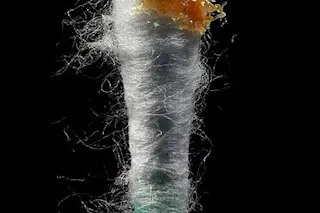Photo: Wikimedia Commons/Gregory F. MaxwellJust in time for the dog days of summer, when mosquitoes swarm at their thickest, we bring you this classic from our archives. Here, scientists hypothesize that ear cerumen (earwax), in addition to its anti-fungal and anti-bacterial properties, would be a great insect repellent. You might be grossed out, but nothing says "summer fun" better than a nice even coating of earwax! Earwax (cerumen) might be formulated into a safe and biodegradable insect repellent “Some of the most common life threatening insect-borne diseases include malaria, leshmaniasis and yellow fever which can be prevented or treated with different non-therapeutic/therapeutic procedures such as use of mosquito net, insect repellent (IR), vector controlling strategies, vaccination and implementation of pharmaceuticals. Among these methods IR provides the cheapest and easiest one to use. Active ingredients of IR usually include N,N-diethyl-3-methylbenzamide (DEET), botanical extracts and picaridin. However still some concerns remain e.g. ...
Flashback Friday: Could the next all-natural insect repellent be made out of earwax?
Explore how earwax can serve as an eco-friendly insect repellent, offering safety and protection against insect-borne diseases.
More on Discover
Stay Curious
SubscribeTo The Magazine
Save up to 40% off the cover price when you subscribe to Discover magazine.
Subscribe













